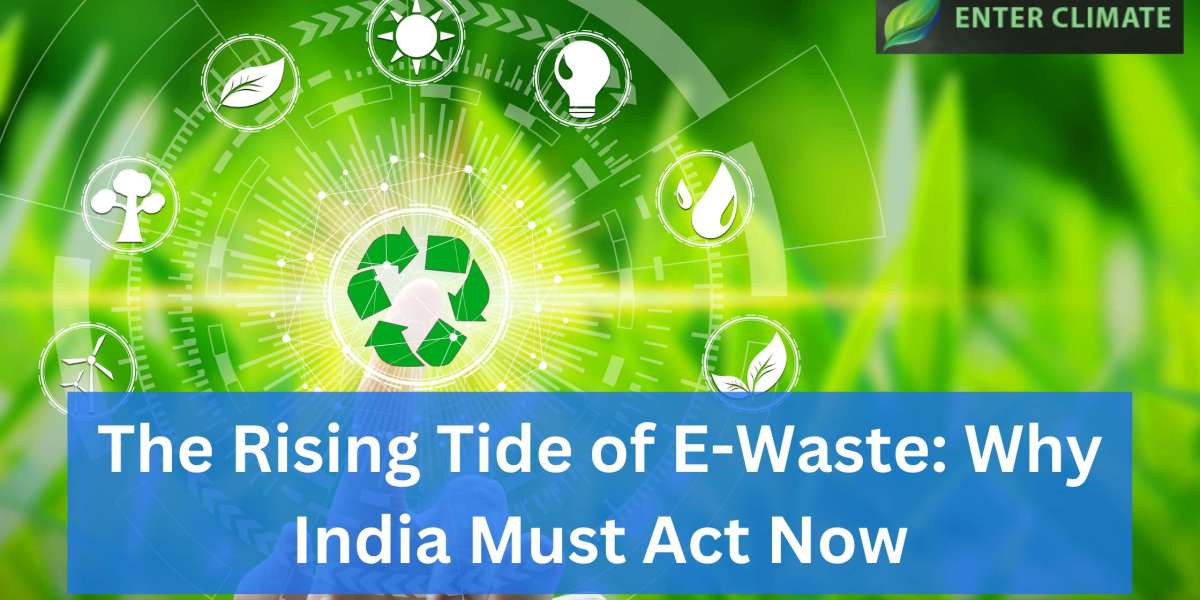Every year, our homes, offices, and schools are filled with new gadgets—smartphones, laptops, TVs, and washing machines. We love upgrading to the latest technology. But do we ever stop and think—what happens to our old devices?
The truth is, when we throw away our old electronics, they don’t just disappear. They turn into electronic waste, or e-waste. This growing mountain of broken gadgets and wires is becoming one of the biggest environmental problems in India and the world.
Let’s understand why e-waste is dangerous, what India is doing about it, and how each one of us can help.
What is E-Waste?
E-waste means electronic waste—any electrical or electronic item that is no longer useful or has stopped working.
Examples include:
Old mobile phones
Computers and printers
Refrigerators, TVs, and microwaves
Broken chargers, wires, or batteries
When we throw these items away, they often end up in dustbins or landfills. But e-waste is not just “junk.” It contains toxic chemicals like lead, mercury, and cadmium that can harm people and the planet.
Why is E-Waste Dangerous?
Imagine if your old phone or laptop was burned or buried in the ground. Inside it are metals and chemicals that can leak into soil and water. This can:
Pollute rivers and groundwater
Harm animals and plants
Cause health problems for people, like breathing issues or skin diseases
When e-waste is burned in open areas, it releases poisonous smoke into the air. Children who live near e-waste dumping grounds are often exposed to these harmful gases.
That’s why e waste management is so important.
What is E-Waste Management?
E waste management means handling electronic waste safely and responsibly—from collecting old gadgets to recycling them in the right way.
Here’s how it works in simple steps:
Collection – Gathering e-waste from homes, offices, and shops.
Segregation – Sorting useful parts from harmful materials.
Recycling – Extracting valuable metals like gold, copper, and silver from the waste.
Disposal – Safely removing or neutralizing toxic substances.
When e-waste is managed properly, we can reduce pollution, save energy, and reuse valuable materials instead of digging more mines for metal.
The E-Waste Problem in India
India is one of the largest producers of e-waste in the world. Every year, millions of tonnes of old electronics are thrown away. Cities like Delhi, Mumbai, Bengaluru, and Chennai are the biggest contributors.
According to reports, India generated over 1.7 million tonnes of e-waste in a recent year—and the number keeps growing.
The main reason?
Rapid digital growth
Shorter lifespan of gadgets
Lack of awareness about e-waste recycling
Most people don’t know that throwing electronics in the garbage is harmful. Many sell them to local scrap dealers who burn or break them to get metals. This method is unsafe and pollutes the environment.
What is EPR Authorisation for E Waste Management?
To solve this issue, the Indian government made a rule called EPR, which stands for Extended Producer Responsibility.
In simple words, EPR authorisation for e waste management means that companies making or selling electronic products must also take care of what happens to those products after use.
So, if a company sells you a laptop, it is also responsible for:
Collecting the old laptop when it stops working
Sending it to authorised recyclers
Making sure it does not harm the environment
The company must get EPR authorisation from the Central Pollution Control Board (CPCB) to prove that they have a plan to manage e-waste properly.
This system makes producers responsible and encourages recycling.
What is PRO Authorisation?
Sometimes, companies can’t handle all the e-waste collection and recycling by themselves. That’s where PROs (Producer Responsibility Organisations) come in.
A PRO authorisation allows these organisations to collect and channel e-waste on behalf of many producers.
They make sure that:
E-waste is collected from consumers safely
It reaches authorised recyclers
Proper records are maintained
This teamwork between producers and PROs makes e-waste management smoother and more efficient.
What is E-Waste Recycling Authorization?
Another important step is e waste recycling authorization.
This authorisation is given to recycling companies that follow safe and scientific methods to handle e-waste. They must:
Use proper machines and safety gear
Store hazardous materials carefully
Ensure nothing harmful goes into air, soil, or water
These recyclers help recover valuable materials from waste and reduce the need for new raw materials.
So, EPR authorisation, PRO authorisation, and e waste recycling authorization work together to keep our environment safe.
How India Can Act Now
India has strong rules for e-waste management, but we still face challenges. Many people don’t know about recycling centres, and informal scrap dealers handle most of the e-waste unsafely.
Here’s what can be done:
1. Spread Awareness
People must know that e-waste is dangerous. Schools, companies, and communities should run awareness drives about safe disposal and recycling.
2. Set Up More Collection Centres
There should be easy drop-off points for people to give away their old electronics instead of throwing them in the trash.
3. Support Authorised Recyclers
Governments and businesses should support authorised recyclers who follow the right methods. This will stop unsafe recycling practices.
4. Encourage Repair and Reuse
Before throwing away a gadget, see if it can be repaired or donated. Reusing electronics can reduce e-waste by a huge amount.
5. Stronger Law Enforcement
Authorities should ensure all electronic producers follow EPR rules and get proper authorisations.
What You Can Do to Help
Even one person can make a big difference. Here’s how:
Don’t throw old electronics in dustbins.
Give them to authorised collection centres or recyclers.
Avoid buying gadgets you don’t really need.
Teach your friends and family about e-waste problems.
Support brands that care for the environment.
Remember: Small actions lead to big changes.
Frequently Asked Questions (FAQs)
1. What is e-waste?
E-waste means old or broken electronic items like phones, TVs, or laptops that are no longer useful.
2. Why is e-waste harmful?
Because it contains toxic materials that can pollute the environment and harm human health.
3. What is EPR authorisation for e waste management?
It’s a rule that makes producers responsible for collecting and recycling the electronic products they sell.
4. What is PRO authorisation?
It allows organisations to collect and manage e-waste on behalf of producers in a safe and legal way.
5. What is e waste recycling authorization?
It’s permission given to recycling companies to process e-waste safely and scientifically.
6. How can I dispose of my old phone or laptop?
You can give it to an authorised e-waste collection centre or recycler near you. Never throw it in the regular garbage.
7. What happens if we don’t manage e-waste properly?
If e-waste is burned or dumped, it can release toxic chemicals that harm people, animals, and the planet.
Final Thoughts
The rising tide of e-waste is a real and urgent issue for India. With millions of devices being replaced every year, we are creating mountains of electronic waste faster than we can manage.
But there’s hope.
With proper e waste management, EPR authorisation, PRO authorisation, and e waste recycling authorization, India can turn this challenge into an opportunity for cleaner growth.
Let’s all remember — every small step counts.
If we start recycling and spreading awareness today, we can make India a cleaner and greener place for tomorrow.
Author: Upendra Sharma
Upendra Sharma is part of the Enterclimate team — India’s leading environmental consultancy firm. He works with experts in E-Waste Management, EPR Authorisation, and Sustainability Compliance to help businesses adopt eco-friendly practices.
Through his writing, Upendra aims to make complex environmental topics simple and inspiring for everyone — from students to business leaders.














